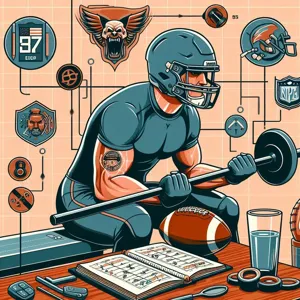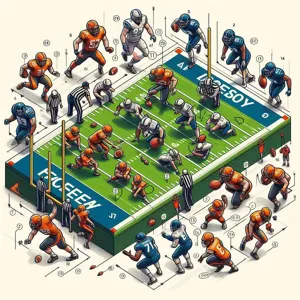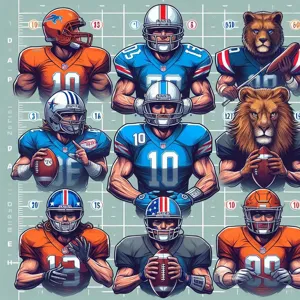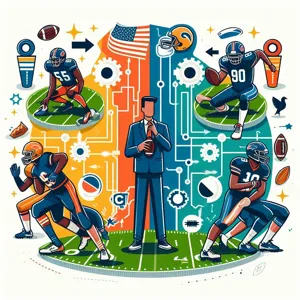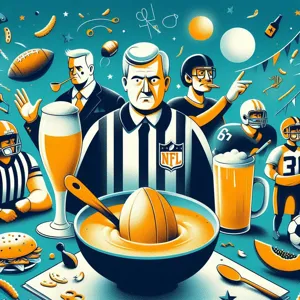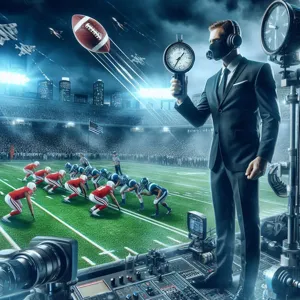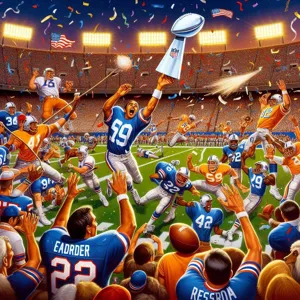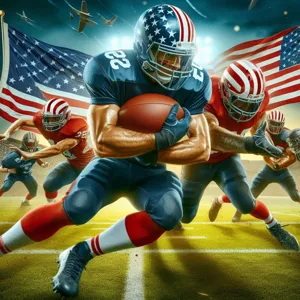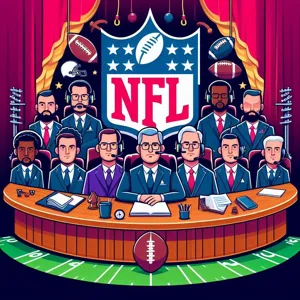In the world of football, triumph and tribulation often go hand in hand.
Every season presents teams with unique challenges—injuries, tough losses, and unexpected setbacks that can test the resolve of even the most seasoned players and coaches. However, it’s how a team responds to adversity that truly defines its character and potential for greatness. In this blog post, “Rising Together: Strategies for Football Teams to Overcome Adversity,” we will explore practical and effective strategies that teams can implement to build resilience, strengthen camaraderie, and foster a winning mindset. From cultivating mental toughness and embracing open communication to harnessing the power of teamwork and developing a positive culture, these insights will empower teams to not only navigate difficulties but also emerge stronger and more united than ever before. Join us as we delve into the heart of what it means to rise together in the face of adversity, both on and off the field.
1. Understanding Adversity in Football

Adversity in football is an inevitable part of the game, manifesting in myriad forms that challenge teams both on and off the pitch. Whether it’s a string of unexpected injuries to key players, a mid-season slump in performance, or external pressures from fans and media, teams must navigate a complex landscape of obstacles. Understanding adversity means recognizing that these challenges are not merely setbacks, but opportunities for growth and resilience.
In the locker room, adversity can fuel tension or foster camaraderie, depending on how it is approached. It can test a team’s mental fortitude, pushing players to dig deeper within themselves and rely on one another for support. From a tactical standpoint, coaches must adapt their strategies, often reinventing their game plans to account for the unique challenges they face. This adaptability is crucial; teams that can pivot in response to adversity often come out stronger on the other side.
Moreover, the psychological impact of adversity cannot be overlooked. Players may experience self-doubt or frustration, which can affect their performance. Understanding the emotional landscape during tough times is essential for coaches and teammates alike, as fostering a culture of support and open communication can help individuals cope and thrive. By acknowledging the reality of adversity and implementing strategies to address it, football teams can turn potential crises into stepping stones for success, uniting them in their pursuit of greatness.
2. The Role of Team Chemistry in Overcoming Challenges
In the world of football, where the stakes are high and the pressure can be overwhelming, team chemistry emerges as a crucial element in overcoming adversity. It’s the intangible bond that ties players together, fostering a sense of trust, understanding, and collaboration that can make or break a season. When facing challenges—be it a string of losses, injuries to key players, or external pressures from fans and media—a team’s ability to rally together can spell the difference between success and failure.
Strong team chemistry is built on effective communication, shared goals, and mutual respect. Players who understand each other’s strengths and weaknesses are more likely to adapt their playstyles to complement one another. For example, a quarterback who knows his wide receiver’s tendencies can anticipate their moves, allowing for fluid plays even under intense pressure. This level of synergy not only enhances performance on the field but also cultivates resilience off of it. When players feel connected, they are more likely to support each other emotionally and mentally during tough times, turning moments of despair into opportunities for growth.
Moreover, fostering team chemistry requires intentional effort from coaches and team leaders. Organizing team-building activities, both on and off the field, can help strengthen relationships and create a cohesive unit. Whether it’s a casual dinner, a charity event, or extra practice sessions tailored to teamwork drills, these experiences allow players to bond and develop a deeper appreciation for one another. The result? A team that fights for each other, not just for individual accolades.
Ultimately, when adversity strikes, it’s this sense of unity that empowers a football team to rise above challenges. The players who trust each other will push through the tough moments, believing that together, they can overcome any obstacle. In the face of adversity, a team with strong chemistry can turn setbacks into comebacks, proving that while talent is essential, it is the bonds forged in the trenches that truly lead to victory.
3. Building a Resilient Mindset
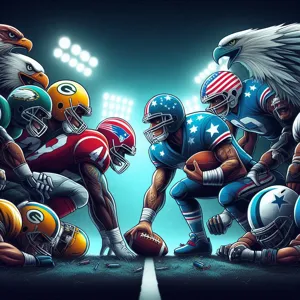
In the world of football, adversity is an inevitable part of the game. From unexpected injuries to disappointing losses, challenges can strike at any moment, testing the mental fortitude of even the most seasoned players. Building a resilient mindset within your team is crucial for navigating these tumultuous times and emerging stronger on the other side.
To foster resilience, start by creating an environment where players feel safe to express their frustrations and fears. Encourage open communication during team meetings, where players can share their experiences and strategies for overcoming obstacles. This not only helps to develop a supportive team culture but also allows individuals to learn from one another’s challenges and triumphs.
Incorporating mindfulness and mental conditioning exercises into training sessions can also bolster resilience. Techniques such as visualization, breathing exercises, and positive affirmations help players develop focus and emotional regulation, empowering them to tackle pressure situations with confidence.
Moreover, instilling a growth mindset—where setbacks are viewed as opportunities for learning rather than failures—can significantly enhance a team’s resilience. Celebrate small victories, emphasize progress over perfection, and encourage players to reflect on their performances, focusing on what they can improve for the future.
Finally, remind your team of the collective strength they possess. Emphasizing camaraderie and unity fosters a sense of belonging, making it easier for players to rally around one another in tough times. When they see their teammates confronting challenges with determination, it inspires them to do the same.
By proactively nurturing a resilient mindset, football teams can turn adversity into a catalyst for growth, ensuring they rise together, no matter the challenges they face.
4. Effective Communication Strategies on and off the Field
Effective communication is the backbone of any successful football team, serving as a vital link that unites players, coaches, and staff both on and off the field. During challenging times, when adversity strikes—be it through a series of losses, injuries, or external pressures—clear and open channels of communication become even more critical.
On the field, this means that players must develop a shared language, an intuitive understanding of each other’s movements, strengths, and weaknesses. Implementing regular huddles and strategy sessions can enhance this synergy, allowing players to voice their insights and collaborate on tactical adjustments in real time. Coaches should encourage players to communicate freely, fostering an environment where everyone feels empowered to express their thoughts or concerns. This can lead to better decision-making during high-pressure situations, enabling players to adapt quickly and cohesively.
Off the field, communication strategies should extend beyond the locker room. Establishing regular check-ins, whether through team meetings or one-on-one conversations, allows players to voice any personal struggles they may be facing. Creating a culture of trust and support can help team members feel valued and understood, which is essential in overcoming adversities together. Utilizing technology—such as team messaging apps or video calls—can keep everyone connected, especially during times when face-to-face interactions may be limited.
In addition, transparent communication from coaches and management regarding team goals, expectations, and any changes in strategy fosters a sense of inclusivity. When players are kept in the loop, they are more likely to stay engaged and motivated, even when the going gets tough. Letting them know that their opinions matter can cultivate a strong team bond that withstands the test of adversity.
Ultimately, effective communication strategies create a resilient team culture where players feel supported and connected, both on and off the field. By prioritizing open dialogue and mutual respect, football teams can navigate challenges and emerge stronger together.
5. Setting Clear Goals and Objectives
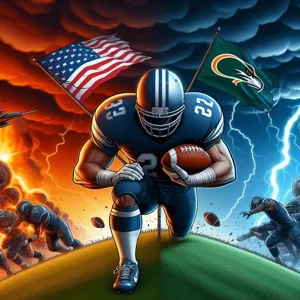
### 5. Setting Clear Goals and Objectives
In the face of adversity, clarity becomes a beacon for any football team striving to rise above challenges. Setting clear goals and objectives is not just a task; it’s a foundational strategy that galvanizes players, coaches, and support staff alike. When adversity strikes—be it injuries, a string of losses, or internal conflicts—having well-defined goals helps to maintain focus and direction.
Begin by involving the entire team in the goal-setting process. This fosters a sense of ownership and accountability, ensuring that each member feels invested in the team’s success. Goals should be SMART: Specific, Measurable, Achievable, Relevant, and Time-bound. For instance, instead of vaguely aiming to “improve performance,” a team could set a clear objective to “increase possession percentage by 10% over the next five matches.” This specificity allows for tangible progress tracking and encourages team members to rally around a common purpose.
Additionally, break down larger objectives into smaller, manageable milestones. This not only makes the journey feel less daunting but also provides regular opportunities for celebration and motivation. Achieving these smaller goals can build momentum, helping the team to regain confidence and cohesion amidst adversity.
Moreover, communication is key. Regularly revisit and discuss these goals in team meetings and training sessions. This not only reinforces commitment but also allows for adjustments based on the team’s evolving circumstances. When everyone is on the same page, the focus sharpens, and resilience is strengthened.
In essence, setting clear goals and objectives acts as a roadmap through turbulent times. It provides direction, fosters unity, and ultimately transforms adversity into an opportunity for growth and success, leading the team to rise together, stronger than before.
6. The Importance of Leadership in Times of Struggle
In the high-stakes world of football, adversity is not merely a possibility; it’s an inevitability. Whether it’s a string of losses, injuries to key players, or external pressures from fans and media, how a team navigates these challenges often comes down to one critical factor: leadership. Effective leadership can be the lifeline that keeps a team afloat during turbulent times, turning potential despair into renewed motivation and determination.
A strong leader on the field—be it a coach or a seasoned player—serves as a beacon of hope and resilience. They provide direction, instilling confidence in their teammates when morale is at its lowest. It’s during these moments that a leader’s ability to communicate effectively is paramount. They must articulate a clear vision, reminding the team of their shared goals and the importance of unity. By fostering an environment of trust and open dialogue, leaders can encourage players to voice their concerns and work collaboratively towards solutions, rather than succumbing to frustration and isolation.
Moreover, the emotional intelligence of a leader plays a vital role in navigating adversity. Understanding when to push players and when to offer support can make all the difference. A leader who recognizes the strain on their team can implement strategies that lighten the load, such as adjusting practice schedules, introducing team-building activities, or simply lending a listening ear. This empathetic approach not only strengthens the bond between players but also cultivates a culture of resilience, where each member feels valued and empowered to contribute to the team’s recovery.
Leadership in times of struggle is also about setting an example. A captain who demonstrates unwavering commitment, discipline, and a positive attitude can inspire others to rise to the occasion. When players see their leader facing challenges head-on, they are more likely to mirror that tenacity in their own performance. This ripple effect can reignite passion and dedication across the entire squad, transforming adversity into an opportunity for growth and development.
In conclusion, the importance of leadership cannot be overstated when it comes to overcoming adversity in football. A powerful leader can unify a team, instill confidence, and guide them through the darkest of times. By embracing the challenges ahead and fostering a spirit of resilience, teams can rise together, emerging stronger and more cohesive than ever before.
7. Training Techniques to Enhance Team Unity

In the world of football, the strength of a team is not solely determined by individual talent; it hinges significantly on the unity and cohesion among its players. To foster this essential bond, implementing specific training techniques can make a world of difference.
**1. Team-Building Exercises:** These activities are not just fun; they are strategic. Incorporating exercises that require collaboration, such as obstacle courses or problem-solving challenges, can break down barriers and encourage players to work together seamlessly. For instance, conducting trust falls or group challenges can help players learn to rely on one another, fostering a sense of mutual support that transcends the pitch.
**2. Small-Sided Games:** Engaging in small-sided games during training sessions can enhance communication and teamwork. These games, whether 3v3 or 5v5, force players to be more involved, make quicker decisions, and develop an understanding of each other’s play styles. The close quarters necessitate constant interaction, which can strengthen relationships and improve on-field chemistry.
**3. Group Discussions and Reflection:** After each training session or match, holding debriefs allows players to express their thoughts and feelings about the day’s activities. Encouraging open dialogue not only promotes transparency but also helps players voice concerns, celebrate successes, and brainstorm solutions to any challenges they face. This practice cultivates a culture of accountability and collective growth.
**4. Joint Goal Setting:** Bringing the team together to set collective goals can create a shared vision that aligns individual aspirations with team objectives. Whether it’s improving a specific skill set or aiming for a particular performance milestone, involving every player in this process ensures that everyone feels invested in the journey.
**5. Social Activities:** Beyond the training ground, organizing social events can strengthen interpersonal relationships. Whether it’s a team dinner, a charity run, or a fun day out, these informal settings allow players to connect on a personal level, breaking down hierarchical barriers. As friendships blossom off the pitch, the trust and understanding on the pitch will flourish.
By adopting these training techniques, football teams can cultivate a spirit of unity that not only helps them navigate adversity but also propels them toward collective success. In a sport where teamwork is paramount, fostering these connections can transform a group of individuals into a cohesive unit, ready to rise together against any challenge that comes their way.
8. Learning from Past Failures: Case Studies
When it comes to overcoming adversity in football, learning from past failures can be one of the most enlightening and constructive paths forward. Examining historical case studies where teams faced significant challenges provides invaluable lessons that can be applied to current situations.
Take, for example, the story of Leicester City in the 2015-16 Premier League season. Predicted to be relegated by most pundits at the beginning of the season, the team found itself in dire straits after a tumultuous previous campaign. Rather than succumbing to the mounting pressure, the players and coaching staff introspectively analyzed their past shortcomings. They learned not only from their tactical missteps but also from the mental hurdles that had plagued them. Through a renewed focus on teamwork, confidence building, and a clear tactical vision, Leicester rallied together, ultimately clinching the league title in one of football’s most remarkable underdog stories.
Similarly, the U.S. Women’s National Soccer Team faced a significant setback in the 2011 FIFA Women’s World Cup final against Japan. After leading the match and suffering a heartbreaking loss in a dramatic penalty shootout, the team took a moment to reflect. Instead of wallowing in defeat, they turned their focus inward, identifying weaknesses in their preparation and execution. This introspection led to a transformation in their training regimen and mental conditioning, culminating in their triumphant victory in the 2015 World Cup.
These case studies illustrate that failure is not the end but rather a crucial opportunity for growth. By assessing what went wrong, teams can implement strategic changes, reinforce their unity, and enhance their resilience. Embracing the lessons learned from past failures can empower teams to rise above adversity, fostering a culture of continuous improvement that inspires both players and fans alike. In the unpredictable world of football, where the next match can present a fresh set of challenges, the ability to reflect and adapt is paramount to achieving long-term success.
9. Incorporating Mental Health Resources for Players
Incorporating mental health resources for players is a crucial strategy for football teams striving to overcome adversity. The pressures of the game—intense competition, injuries, and the weight of expectations—can take a significant toll on a player’s mental well-being. By prioritizing mental health, teams not only foster a supportive environment but also enhance overall performance on the field.
Creating a culture that openly discusses mental health is essential. This begins with education: coaching staff should undergo training to recognize the signs of mental distress and understand how to approach players in need. Regular workshops or seminars led by mental health professionals can empower players to express their feelings and seek help when necessary. These sessions can cover topics such as stress management, coping strategies for performance anxiety, and the importance of resilience.
Additionally, providing access to mental health resources—such as counseling services, hotline numbers, or even on-site psychologists—can make a world of difference. Encouraging players to engage with these resources can help destigmatize mental health discussions, allowing them to view seeking help as a sign of strength rather than weakness.
Moreover, integrating mindfulness practices into training routines can be particularly beneficial. Techniques like meditation, breathing exercises, and visualization not only help players stay grounded but also enhance focus during critical moments in a game.
By addressing mental health proactively, football teams can create an environment where players feel valued and supported. This not only builds stronger team cohesion but also equips players with the resilience needed to face challenges—both on and off the pitch. Ultimately, when mental health is prioritized, teams are better positioned to rise above adversity together, fostering both individual growth and collective success.
10. Strategies for Maintaining Motivation During Tough Times
In the world of football, adversity is an inevitable part of the journey. Whether facing a losing streak, injuries to key players, or the pressure of high expectations, maintaining motivation during these challenging times is crucial for a team’s success. Here are some effective strategies to help inspire and uplift your players when the going gets tough.
First and foremost, **establish a strong support system**. Encourage open communication among team members and coaching staff. Create an environment where players feel comfortable discussing their feelings and expressing their frustrations. Regular team meetings can provide a platform for players to share their thoughts and foster a sense of camaraderie. When players know they are not alone in their struggles, they are more likely to stay motivated and focused on improvement.
Next, **set achievable short-term goals**. During tough times, it can be overwhelming to focus on long-term aspirations like winning a championship. Instead, break down larger objectives into smaller, more manageable goals. Whether it’s improving individual skills, enhancing teamwork, or simply working hard in practice, these incremental achievements can reignite a sense of purpose and progress. Celebrating these small victories, no matter how minor they may seem, can boost morale and keep the team motivated.
Additionally, **leverage the power of inspirational stories**. Share success stories of other teams who have overcome adversity. Highlighting examples of resilience can serve as a powerful reminder that challenges can be conquered with determination and effort. Inviting guest speakers, such as former players or coaches who have faced similar hardships, can also provide valuable perspective and motivation for your team.
Lastly, **focus on the process, not just the outcome**. Encourage your players to concentrate on their performance and the effort they put in, rather than fixating solely on the final score. By shifting the focus to personal and team development, players can find intrinsic motivation in their daily routines and the small improvements they make. This mindset can help mitigate feelings of disappointment and frustration, allowing the team to stay positive even in the face of adversity.
By implementing these strategies, football teams can foster a resilient mindset and maintain motivation during tough times. Remember, it’s not just about the victories on the field; it’s about rising together, learning from setbacks, and emerging stronger than ever.
11. Leveraging Support Systems: Coaches, Families, and Fans
In the world of football, adversity is inevitable. Whether it’s a string of tough losses, injuries to key players, or the pressure of a high-stakes tournament, the challenges teams face can be daunting. However, one of the most powerful strategies for overcoming these obstacles lies in the strength of the support systems surrounding the team. Coaches, families, and fans form a triad of encouragement and resilience that can be pivotal in navigating difficult times.
**Coaches** serve as the backbone of any football team, providing not only tactical guidance but also emotional support. Their experience and leadership are crucial in fostering a positive team culture, especially during challenging moments. A great coach knows how to motivate players when spirits are low, reminding them of their strengths and the hard work that has brought them to this point. By emphasizing teamwork and collaboration, coaches can help players rally together, transforming adversity into a shared challenge that strengthens their bond.
Equally important are **families**, who provide unwavering support beyond the pitch. They are the steadfast cheerleaders, offering encouragement and love that can uplift players during tough times. Families can create a nurturing environment where players feel safe to express their frustrations and fears. Organizing family events or team gatherings can help to foster a sense of community, allowing players to see how they are supported not just by their team, but by their loved ones. This emotional backing can be a game-changer, instilling confidence and resilience in the players.
And then there are the **fans**, the lifeblood of any football club. Their enthusiasm and loyalty can elevate the team’s spirit, even in the face of adversity. A raucous crowd can turn the tide of a match, instilling a sense of pride and motivation in the players. Engaging with fans through social media, community events, and open training sessions can deepen this connection and create a supportive atmosphere. When players know that their fans are behind them, it can inspire them to push through challenges and perform at their best.
In conclusion, leveraging these support systems is not just beneficial; it is essential for any football team striving to overcome adversity. By fostering strong relationships with coaches, engaging families, and rallying support from fans, teams can cultivate an environment of unity and resilience. Together, they can rise above challenges, turning obstacles into stepping stones towards success.
12. Celebrating Small Victories to Build Momentum
In the high-stakes world of football, where every match can feel like a monumental battle against adversity, it’s crucial to recognize that the path to success is often paved with small victories. Celebrating these incremental achievements not only boosts morale but also fosters a culture of resilience and teamwork. Whether it’s a well-executed play in practice, a significant improvement in individual performance, or even a hard-fought draw against a tough opponent, acknowledging these moments is essential for building momentum.
Imagine a scenario where a team struggles in the early weeks of the season, facing numerous setbacks and tough losses. Instead of becoming disheartened, the coaching staff can shift the focus to the positives. Perhaps a player has improved their passing accuracy, or the defense managed to hold the opposing team to fewer goals than in previous matches. By highlighting these successes, coaches can instill a sense of pride and accomplishment within the squad.
Celebrating small victories can take many forms. Team meetings can start with shout-outs for individual players who have shown remarkable effort, or the team can host mini-celebrations after training sessions where milestones are reached. These celebrations not only create a positive atmosphere but also remind players that progress is being made, even if it’s not always reflected in the final scoreline.
As momentum builds, players will feel more confident, and this newfound belief can translate into improved performance on the pitch. In the face of adversity, acknowledging and celebrating these small wins can transform a struggling team into one that is united, motivated, and ready to rise together, ready to tackle the challenges ahead with renewed vigor and determination.
13. Adapting Tactics: Flexibility in Strategy and Play
In the dynamic world of football, where the only constant is change, the ability to adapt tactics and strategies is a crucial element for overcoming adversity. Whether facing a formidable opponent, dealing with injuries to key players, or navigating the unpredictable ebbs and flows of a match, flexibility in play can be the difference between victory and defeat.
Coaches and players alike must cultivate a mindset that embraces adaptability. This means being prepared to shuffle formations based on the strengths and weaknesses of both your team and your opponent. For instance, if the opposing team is excelling in a high-pressing style that exposes gaps in your defense, it may be time to switch to a more compact formation that prioritizes defensive solidity while inviting the opposition to overcommit. This tactical shift not only mitigates threats but also creates opportunities for counter-attacks.
Moreover, in-game adjustments are essential. A team that enters a match with a rigid game plan may soon find itself outmatched. Coaches should be keen observers, able to recognize when the initial strategy isn’t yielding results. Making timely substitutions, altering player roles, or changing the pace of the game can reinvigorate the squad and disrupt the opponent’s rhythm. For example, introducing a fresh midfielder with the ability to orchestrate play can help regain control in the midfield battle, while a speedy winger can exploit tired defenders as the match progresses.
Moreover, fostering an adaptable mindset throughout the team extends beyond tactical changes on the pitch. It encourages players to be versatile in their roles, allowing them to step into different positions as the need arises. This not only bolsters team cohesion but also enhances individual development, making players more valuable assets in the long run.
Ultimately, the key to overcoming adversity lies in a team’s willingness to embrace change, learn from setbacks, and innovate on the fly. By prioritizing flexibility in strategy and play, football teams can rise to challenges, transforming obstacles into opportunities for growth and success. Whether it’s a last-minute shift in tactics or a broader philosophical adjustment over the course of a season, adaptability will empower teams to navigate the unpredictable landscape of football and emerge stronger together.
14. Encouraging a Positive Team Culture
Encouraging a positive team culture is one of the most powerful strategies a football team can adopt to overcome adversity. A strong team culture acts as the backbone of any successful squad, fostering an environment where players feel valued, supported, and motivated to push through challenges together.
At its core, a positive team culture is built on trust, open communication, and mutual respect. Coaches can cultivate this atmosphere by regularly initiating team-building activities that strengthen bonds among players, both on and off the field. Whether it’s organizing fun outings, team dinners, or informal training sessions, these moments create a sense of belonging and camaraderie that can be crucial during tough times.
Furthermore, it’s essential for leaders within the team—be it the captain, coaches, or veteran players—to model positivity and resilience. Their attitude can set the tone for the entire squad. When adversity strikes, it’s the leaders who can inspire the team to maintain focus and determination, reminding everyone of their shared goals and the collective strength they hold.
Encouraging open dialogue also plays a vital role in fostering a positive culture. Creating a safe space where players can express their feelings, discuss their challenges, and share their successes encourages vulnerability and strengthens relationships. Regularly checking in with players, both individually and as a group, ensures that everyone feels heard and understood.
Additionally, celebrating small victories, regardless of how minor they may seem, can greatly enhance team morale. Recognizing individual and team achievements reinforces the idea that hard work is appreciated, and it motivates everyone to strive for continuous improvement.
Ultimately, a positive team culture is more than just a feel-good concept; it serves as a crucial tool for resilience. When players feel connected and uplifted by their teammates, they become more equipped to face adversity head-on, united in their pursuit of success. In the world of football, where challenges are inevitable, fostering this culture can be the key to rising together, no matter the obstacles that lie ahead.
15. Conclusion: The Power of Unity in Overcoming Adversity
In the world of football, the challenges a team faces can often feel insurmountable. From unexpected injuries to devastating losses, adversity is an inevitable part of the journey. However, as we conclude our exploration of strategies for overcoming these hurdles, one truth stands firm: the power of unity is a formidable force that can turn the tide in favor of a team.
When players, coaches, and staff come together and cultivate a sense of belonging, they create an unbreakable bond that transcends the field. Unity fosters trust, enhances communication, and builds resilience. It transforms individual players into a cohesive unit, where each member understands their role, supports one another, and shares a collective vision. In moments of struggle, this unity becomes a beacon of hope, reminding everyone that they are not alone in their fight.
Moreover, a united front can inspire a culture of accountability and perseverance. When teammates rally around one another, they encourage each other to give their best, both in practice and in games. This shared commitment often leads to remarkable comebacks and unexpected victories, proving that together, they can overcome any challenge.
As teams rise to meet adversity, they must remember that every setback is an opportunity for growth. The lessons learned through hardship can strengthen bonds and foster a spirit of determination that lasts beyond the current season. In the end, it is not just the trophies that define a team, but the unity they exhibit in facing life’s challenges together.
So, as we reflect on the journeys of football teams navigating adversity, let us celebrate the power of unity. It is the steadfast belief in one another that will propel teams forward, allowing them to rise together, stronger than ever before.
In conclusion, overcoming adversity is an inevitable part of a football team’s journey, but it is also an opportunity for growth, resilience, and unity. By implementing the strategies outlined in this article—cultivating strong communication, fostering a supportive team culture, setting clear goals, and embracing a mindset of adaptability—teams can transform challenges into stepping stones toward success. Remember, the true strength of a team lies not just in its skill on the field but in its ability to rise together in the face of adversity. As you navigate the ups and downs of your season, keep these principles in mind, and watch your team flourish both on and off the pitch. Together, you can turn obstacles into triumphs and emerge stronger than ever.

